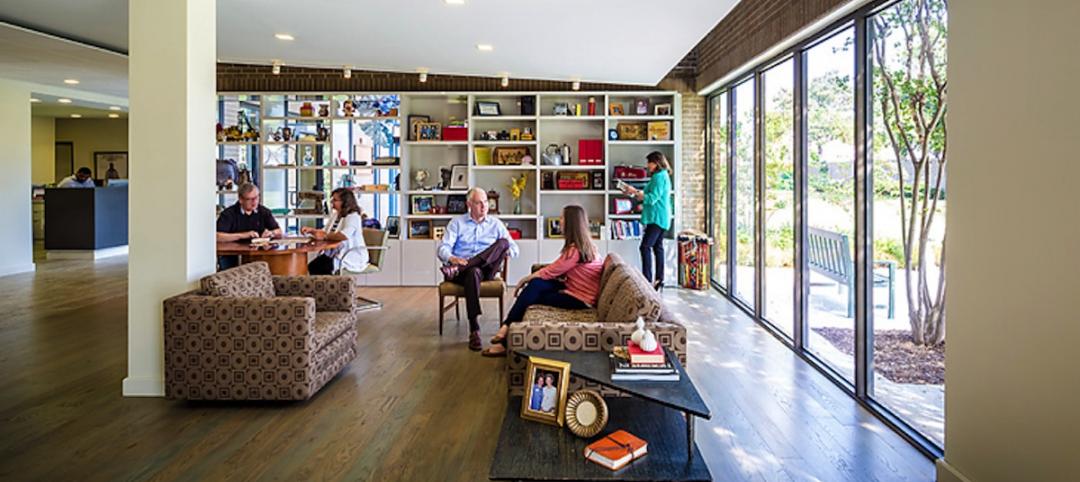Keeping patient data secure is a serious concern for medical professionals. Traditional lock-and-key systems do very little to help manage this problem, and create additional issues of their own. “Fortunately, wireless access control — a keyless alternative — eliminates the need for traditional physical keys while providing a higher level of security and centralized control,” says Cliff Brady, Salto Director of Industry Sectors Engagement, North America. Let’s explore how that works.
The Challenges
Controlling access to medical office spaces through the use of traditional keyed locks presents distinct challenges. When there are changes, either to staff or to their permissions, retrieving and reissuing keys can become a time-consuming and potentially problematic endeavor.
The American Medical Association states that physicians have an ethical mandate to guard patient information and only disseminate it with patients’ permission. In addition, the U.S. Health Insurance Portability and Accountability Act (HIPAA) and the European Union’s General Data Protection Regulation (GDPR) laws establish limits on who can access private health information. Penalties and fines for violations can be severe, even when a breach is accidental. With so much at stake, both for patients and healthcare practitioners, physical security for medical office facilities is of utmost importance.
However, these buildings tend to be accessible to many different individuals throughout the business day. With the boom in buildout of medical office spaces, more doctors, nurses and patients are moving through these facilities than ever before, and not everyone should be permitted in every area.
A Better Way to Manage Physical Security
Brady notes that keyless locking systems can greatly enhance compliance. Instead of mechanical locks, battery-powered electronic locks can be installed, and these do not require complicated wiring. “This system screens individuals for authorized access using established credentials, protecting patient privacy and confidential information,” he says. Users can only open doors to their permitted zones; this is accomplished by using a single remotely programmable key fob, or by an app on an electronic device, such as a tablet or cellphone.
Keyless systems also allow administrators to track who accessed which areas of the building and when. “This provides an audit trail and affords effective tracking of staff activities,” says Brady. He adds that access management is easily granted or revoked for individuals or groups as needs dictate, and this process can be managed remotely. “This is particularly useful for medical practices that have multiple locations and offsite facilities,” he adds.
In emergencies, wireless access control systems like Salto’s provide safe and efficient egress with panic bars for easy opening of doors. A monitoring feature also notifies the administrator if a door is accidentally left open or if there are unauthorized access attempts. In a situation requiring a lockdown, Salto Space technology can quickly secure the premises, restricting or preventing access altogether.
Infection Control Benefits
Wireless access control doesn’t only protect the physical premises of medical offices and sensitive medical data; it is also important in protecting patients’ health. Brady says, “This technology goes beyond controlling access to physical spaces in the interest of regulatory compliance. Infection control can also be better managed by limiting access.”
For example, the recent Covid-19 epidemic created the need for contact tracing within patient populations. The data provided by electronic access control supported these tracing efforts by collecting data on who had been in the proximity of infected individuals and monitoring their exposure risks.

Impact Felt Across Entire Facilities
A keyless access system can assure medical practitioners that they are helping prevent data breaches and the spread of infectious disease. Having quick access to various parts of the building without needing to manage physical keys also makes them more efficient.
Facility administrators can track arrival and departure of staff and vendors, immediately grant and revoke access from wherever they happen to be, and ensure the building is compliant with regulations.
Patients can rest easy, knowing that their data has an extra level of protection by limiting access to unauthorized individuals, and that they are protected against disease by an extra element of physical security.
Brady adds, “Wireless access control also allows management to analyze patterns such as occupancy levels for the purposes of optimizing resource allocation, to identify high-traffic areas, and to adjust workflows and resource planning accordingly.”
The benefits of keyless access systems like Salto’s include improved compliance, greater convenience, better patient safety and enhanced physical security.
Related Stories
Healthcare Facilities | May 27, 2015
Rochester, Minn., looks to escape Twin Cities’ shadow with $6.5 billion biotech development
The 20-year plan would also be a boon to Mayo Clinic, this city’s best-known address.
Healthcare Facilities | Apr 28, 2015
10 things about Ebola from Eagleson Institute's infectious disease colloquium
Research institutions know how to handle life-threatening, highly contagious diseases like Ebola in the lab, but how do we handle them in healthcare settings?
Green | Apr 22, 2015
AIA Committee on the Environment recognizes Top 10 Green Projects
Seattle's Bullitt Center and the University Center at The New School are among AIA's top 10 green buildings for 2015.
Building Team Awards | Apr 10, 2015
14 projects that push AEC teaming to the limits
From Lean construction to tri-party IPD to advanced BIM/VDC coordination, these 14 Building Teams demonstrate the power of collaboration in delivering award-winning buildings. These are the 2015 Building Team Award winners.
Building Team Awards | Apr 10, 2015
Prefab saves the day for Denver hospital
Mortenson Construction and its partners completed the 831,000-sf, $623 million Saint Joseph Hospital well before the January 1, 2015, deadline, thanks largely to their extensive use of offsite prefabrication.
Building Team Awards | Apr 10, 2015
Virtual collaboration helps complete a hospital in 24 months
PinnacleHealth needed a new hospital STAT! This team delivered it in two years, start to finish.
Building Team Awards | Apr 9, 2015
Big D’s billion-dollar baby: New Parkland Hospital Tops the Chart | BD+C
Dallas’s new $1.27 billion public hospital preserves an important civic anchor, Texas-style.
Building Team Awards | Apr 9, 2015
‘Prudent, not opulent’ sets the tone for this Catholic hospital
This Building Team stuck with a project for seven years to get a new hospital built for a faithful client.
Healthcare Facilities | Apr 8, 2015
Designing for behavioral health: Balancing privacy and safety
Gensler's Jamie Huffcut discusses mental health in the U.S. and how design can affect behavioral health.
Building Team Awards | Apr 5, 2015
‘Project first’ philosophy shows team’s commitment to a true IPD on the San Carlos Center
Skanska and NBBJ join forces with Sutter Health on a medical center project where all three parties share the risk.

















